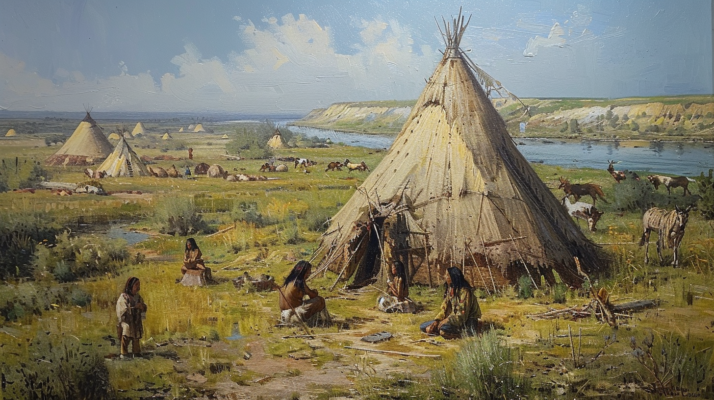Native Californians were treated abominably where gold was first discovered. James Marshall didn’t come to California to find gold. But in 1848, he noticed a glinting rock while building a mill for local landowner John Sutter, changing both his fate and California’s forever.
The Gold Rush transformed the lives of California’s Native Americans. Within years, they were nearly wiped out due to the massive immigration and hunger for wealth the Gold Rush inspired. Anglo settlers declared war on the Native Californians. But the Forty-Niners weren’t the first white people to oppress or enslave Native Americans in California. The land where Marshall spotted the gold was part of a vast empire built on the slave labor of Indigenous peoples.
Without Native Americans, John Sutter—owner of the mill where gold was discovered—would never have become so powerful. Sutter enslaved hundreds of Native Americans, using them as free labor and a militia to defend his territory. He also set the stage for their genocide.
Before John Sutter became a land baron, he was Johann Suter, a debt-ridden shop owner in Switzerland. Fleeing debt, he left his home country—and his family—behind. California, then a Mexican province, tempted Sutter with its vast natural resources and sparse population. With a group of Native Americans he had “acquired,” he convinced the provincial governor to grant him 50,000 acres for a settlement and trade center he named “Nueva Helvetia” in 1841.
Sutter became Nueva Helvetia’s judge and military commander. To acquire the land, he converted to Catholicism and became a Mexican citizen, soon doubling his land holdings. Though the land seemed sparsely populated to Anglo settlers, it was home to Native Americans who found their homelands now the property of outsiders. These native peoples presented both a threat and an opportunity to Sutter. Initially forging a relationship with local Nisenan people, Sutter turned them into a militia, outfitting them with uniforms and weapons to defend his land.
Despite his land grant requiring friendly treatment of Native Americans, Sutter began interfering with local tribes, disrupting customs, and creating a “harem.” Heinrich Lienhard, a Swiss employee, accused Sutter of molesting Native American girls. Sexual coercion wasn’t Sutter’s only method of control. He also enslaved Native Americans, keeping them “strictly under fear” and killing those who resisted. “Sutter keeps 600 to 800 Indians in a complete state of slavery,” wrote a visitor, James Clyman.
Edwin Bryant, a newspaper editor from Kentucky, described how native workers were fed offal and leftover wheat bran, eating without utensils or bowls. They slept in locked rooms and were whipped or murdered when they refused to comply. Sutter’s treatment of Native Americans deeply affected white settlers. Historian Benjamin Madley notes these encounters fueled racism and hardened colonists to cruelty toward California Indians.
For Sutter, Native Americans weren’t just labor—they were currency. He traded native labor among local rancheros and new settlers, receiving up to two dollars a day for their services. Sutter’s hospitality to white settlers starkly contrasted with his treatment of Native Americans. Not all of Sutter’s workforce were slaves; some were paid in tin currency usable only at his store. Chiefs were sometimes paid for their work.
A measles epidemic eventually wiped out many of Sutter’s Native American laborers. To compensate, he built a sawmill, leading to the discovery of gold. Marshall was led to the gold site by a Native American guide, and the dirt was dug by Sutter’s Native Americans who knew about the gold but didn’t value it.
After gold’s discovery, squatters overran Sutter’s ranch, looting and destroying his property. His Native American workers deserted him, and his land claims were invalidated. Sutter died impoverished in 1880, and Marshall went bankrupt and died in poverty.
The biggest losers were California’s Native Americans. Within 20 years of the Gold Rush, 80 percent of the state’s Native American population was wiped out—victims of displacement, disease, and genocide for power and gold. John Sutter had set the stage for their destruction, but his cruelty was only the beginning.





